A Grandmother’s Reel Adventure
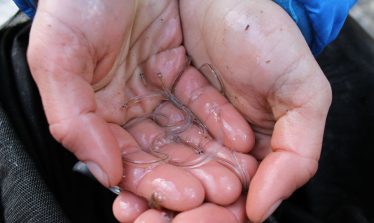
Never in my wildest dreams did I ever think I would be excited about eels. Until, that is, the night I heard on Channel 12 about the Hudson River Eel Project. The program involved going into a tributary of the Hudson nearby to collect data on baby glass eels as they swim up the Hudson River growing into adult eels. The word that caught my attention immediately was the word “baby.” I called first thing the next morning and signed up.
And so began my 5-week adventure down into the Furnace Brook tributary to release the baby glass eels from nets called fykes which are set up by the DEC (Department of Environmental Conservation). Once or twice a week I would venture down with another volunteer to open the nets, count the glass eels, collect data and then carry them in buckets above a small dam, so they could access better habitat and continue their journey north. In some areas there are turbines and other obstructions that prevent the eels from continuing their journey north. As a 72-year-old grandmother with a knee issue, I needed to be brave as volunteers had to hold onto a rope to climb down a fairly steep hill into the tributary. It was mind over matter and I survived, staying upright most of the time.
For the past 16 years students, volunteers and teachers have been donning waders (waterproof overalls and boots) from April through May to take part in research on migrating juvenile American eels, also known as Anguilla rostrata to the science world. Teatown Lake Reservation was in charge of organizing volunteers and overseeing the collection of data each week. Each year the DEC sets up nets designed to catch the baby eels from Staten Island up to the Albany area. Our team in 2019 was led by Marie Roche from Teatown and Sarah Mount from the DEC.
But why would so much time, energy and funding be used for such an undertaking? I would later find out that because of the American eel’s sensitivity to environmental change, the data collected is used by scientists as a bio-indicator of the health of the river and the surrounding watershed, or the area of land from which water drains into a river or other body of water. The Hudson River watershed covers almost 13,400 square miles and includes hundreds of tributary streams. So, in layman’s terms, if the eels are swimming, it’s a good thing for the Hudson River.
When I began to research the journey of the American eel, I was amazed by everything this creature undergoes during its lifetime. And this has been going on for millennia. Far away in the Sargasso Sea (named after its characteristic brown seaweed called Sargassum, a type of algae) in the middle of the Atlantic Ocean, millions of American and European eels are born every year; the two species are genetically different. The larvae, called leptocephali, are flat and transparent, resembling the shape of a willow leaf. Their name comes from the Latin for “slim head.”
They are transported on ocean currents until they reach North America and Europe, sometimes taking a year or more to arrive.
Now one of nature’s most incredible transformations begins. The eel’s skin and internal organs change in order to adapt to living in fresh water after living in salt water. Following the larva stage, the eels become glass eels, about 2-3 inches long with elongated bodies and prominent black eyes and developed fins. Glass eels then turn into elvers, becoming dark gray and forming a thick and slippery mucous layer. The elver stage is followed by the juvenile or yellow eel stage and finally by the silver or mature adult eel, reaching lengths of 3-5 feet.
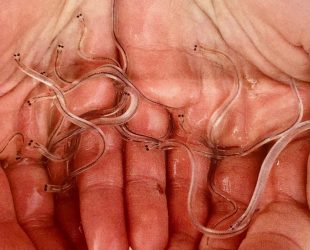
Baby glass eels
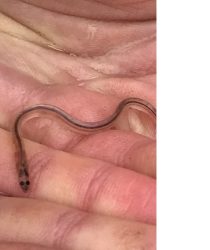
Elver stage
Eels are nocturnal, feeding mostly at night. Their diet consists mainly of fish, crustaceans, worms, mollusks, clams and aquatic insects. They are also bottom-dwellers and can hide in burrows, mud, sand and masses of plants to name a few places. This survival skill allows them (especially in the early stages of development) to avoid predators such as fish-eating birds of prey and large fish such as striped bass.
American eels can travel up to 4,000 miles in a lifetime and live up to between 30 and 50 years of age. Most shocking to me was that at the end of their life, they must swim back to the Sargasso Sea where they were born. How is this possible? Some scientists believe that the earth’s magnetic field helps them find their way back. And… it gets even more amazing. During the return trip to the Sargasso, the eels stop eating, their skin thickens and their eye size doubles, improving their vision in deep, dark water. Now they will spawn and die. The adult eels’ work is done.
The new larvae will now begin their journey as they have been doing for millions of years. For centuries eels have captured the imagination of people all over the world. They have served as cultural and sacred symbols of inner strength, adaptability, transformation and the ability to survive challenges.
I felt strongly that this creature’s story needed to be told to young people. Taking part in citizen scientist programs as a volunteer can build community and inspire kids to think about careers in marine biology and other life sciences. After much research and many rejections, Nature Friend Magazine published my article this past February. I was so happy that youngsters would learn more about the amazing American eel.
When I walk along the Hudson River now, I think more about all that is going on beneath the surface. I am very grateful to Teatown and the invitation to volunteer with the eel project and step outside myself for a few weeks in 2019 to discover a world I knew nothing about.
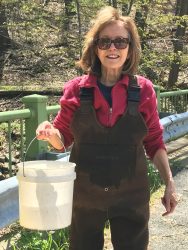
ABOUT THE AUTHOR
Regina Montana
Teatown Member and Volunteer
Visit www.reginamontana.com to read more of her writing.


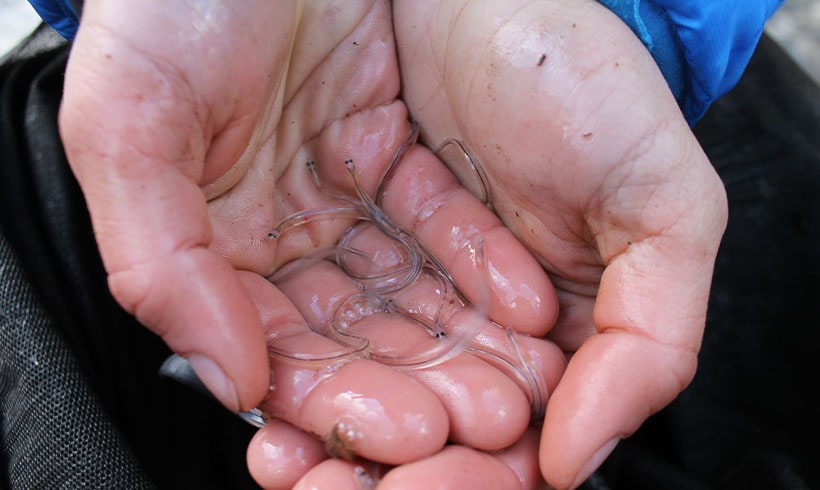
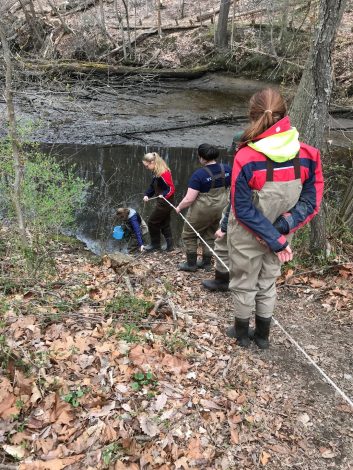
Leave a Reply